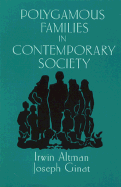Book contents
- Frontmatter
- Contents
- Foreword
- Preface and acknowledgments
- 1 Introduction
- Historical background
- Early stages of relationships
- Home environments of plural families
- Managing everyday life
- 13 The rotation process: Husbands and wives alone together
- 14 Budget and resource management
- 15 Celebrations and holidays
- Social-emotional and family relationships
- Appendix A Methodology and procedure
- Appendix B Demographics of Mormon polygyny
- Notes
- References
- Index
13 - The rotation process: Husbands and wives alone together
Published online by Cambridge University Press: 05 May 2010
- Frontmatter
- Contents
- Foreword
- Preface and acknowledgments
- 1 Introduction
- Historical background
- Early stages of relationships
- Home environments of plural families
- Managing everyday life
- 13 The rotation process: Husbands and wives alone together
- 14 Budget and resource management
- 15 Celebrations and holidays
- Social-emotional and family relationships
- Appendix A Methodology and procedure
- Appendix B Demographics of Mormon polygyny
- Notes
- References
- Index
Summary
Ideally, in a polygynous Mormon family a husband and each wife spend some time alone with one another and with their children, doing what any monogamous couple does – eating, talking, solving family problems, interacting with children, sleeping together, having sexual relationships, watching television, or engaging in some type of recreation. But how do they manage this essentially dyadic process in the context of a communal life involving several husband–wife–children units? Put another way, how does a husband “rotate” among wives and children so as to acknowledge the uniqueness of each dyad in a plural family and simultaneously preserve the family's communal unity?
Rotation patterns in polygynous cultures vary widely with regard to a number of dyadic and communal issues. To begin with, who visits whom – does the husband go to the wives, or do they go to him? Is “fairness” regarding the time a husband spends with different wives a consideration in rotation patterns? Who decides when and for how long a husband and wife spend time together – the husband, the wives, everyone? What type of “rotation systems” do plural families use – a rigid one in which a husband spends fixed times with each wife; a completely open system with no regular pattern of rotation; or a flexible system with some systematic rotation pattern but also with some flexibility and variation?
- Type
- Chapter
- Information
- Polygamous Families in Contemporary Society , pp. 279 - 301Publisher: Cambridge University PressPrint publication year: 1996

